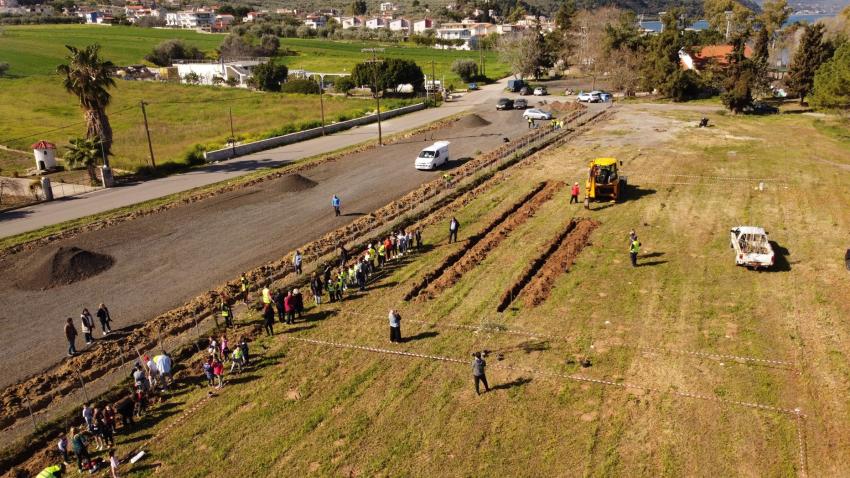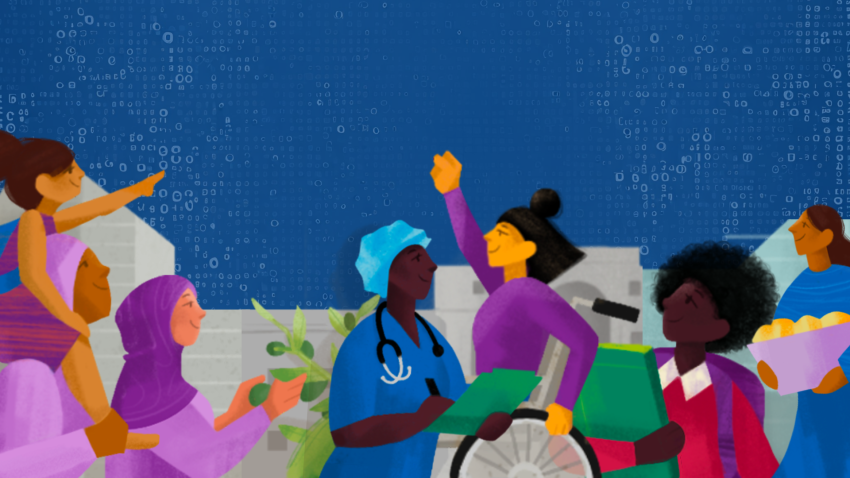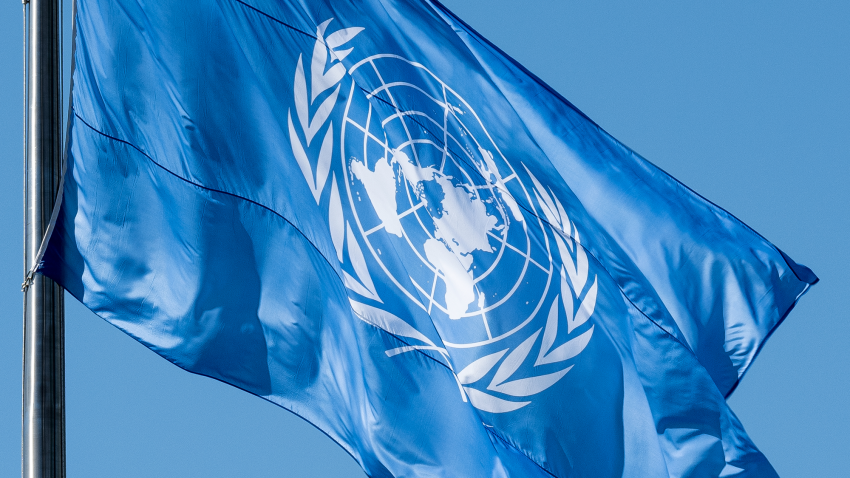Fridays have always been on the mind of your UNAI team, the day this newsletter goes out and we were sorry to miss doing so last week, preoccupied as we were by the annual meetings of the UN’s Committee on Information, of which we are also the Secretariat, bridging spring’s gentle April dusk with the languid dawn of early May summer. In the phrase of our Committee Chairman, Ambassador Cristian Espinosa of Ecuador, at the opening of its session, “as we move into the last week of April, our minds go back to this month last year, the fears we had, the uncertainties with which we were confronted, the plans we needed to break or change. We are not out of the woods yet but are stronger and more hopeful. A great poet of my country, Medardo Ángel Silva, conjured a beautiful phrase del ruisenor que canta, y del alba de abril; may this session of our Committee prove the dawn of returning hope, like the nightingale who sings at daybreak in April.”
Last weekend was bookended by two celebratory observances, the International Day of Jazz on Friday April 30, and World Press Freedom Day on Monday May 3. Walking to the northern edge of New York’s Central Park over the weekend, I came across the statue of Duke Ellington (whose birthday fell on April 29), pictured above, with a stern sign next to it saying no standing was allowed ; entirely apposite, if peremptory, since the one thing that jazz does not allow you to do is to stand still, its notes and unexpected excitements spur movement, much like press freedom which, with its exhilaration of idea and opinion, commands the restlessness and occasional anger of the human mind. A connection Duke Ellington was quick to note when he described jazz as “a good barometer of freedom... in its beginnings, the United States of America spawned certain ideals of freedom and independence through which, eventually, jazz was evolved, and the music is so free that many people say it is the only unhampered, unhindered expression of complete freedom yet produced in this country.”
The earliest printed references to jazz, writes Lewis Porter, “are in California baseball writing, where it means “lively, energetic” or, in Herbie Hancock’s phrase “a movement in which people of all ages, nations, backgrounds, identities and ethnicities can agree that our similarities are stronger than our differences.” Movement yet again, and the affirmation that “good jazz knows no boundaries,” as Leonard Feather wrote apropos of a delightful band, formed in 1958, called “United Notions”; four years later , during United Nations Charter week in 1962, New York’s Museum of Modern Art hosted the Herbie Mann Afro-Jazz Sextet in cooperation with the United Nations Jazz Society (admission to the museum was a dollar, for fifty cents more you could attend the concert.) Herbie Mann, the museum noted, who “uses Latin and African rhythms to expand his interpretation of modern jazz, is the leading jazz flutist in the United States. As composer and arranger, his repertoire grew during tours of South America and Africa sponsored by the State Department. At his Museum concert, he will introduce music by young Brazilians who have incorporated modern jazz into their works; he will also play compositions of his own based on these works.”
With his sextet, Herbie gave life to the two themes of our conversation today through “Uhuru” , the Swahili word for “freedom.” By the time he went “into Art d’Lugoff’s Village Gate in 1962 for an engagement that is unlikely to be forgotten by anyone involved, (he) was experimenting with so many new ideas that a set by his group was comparable with a session at the United Nations. His vibraphonist, Hagood Hardy, had been raised in Canada. Ahmad Abdul-Malik, a bearded sheik-like man with a supple command of the bass, was of Sudanese descent. Percussionist Ray Mantilla claimed Puerto Rican and Peruvian parentage. Dakar, West Africa, furnished the group with Chief Bey, featured on African drums. The regular drummer was an Afro-American from the Bronx, Rudy Collins.”
There was poignancy to this year’s International Day of Jazz as well; the eminent Indian jurist and jazzianado, Soli Sorabjee, passed into its embrace with COVID; in an elegiac tribute, Pallavi Shroff recalls that for him, jazz was “very warm and personal. It speaks to the heart. Perhaps the influence of jazz explains Soli’s direct and uninhibited demeanour. Soli didn’t build boundaries in conversations and spoke from the heart, of the heart. He loved that a jazz tune provided ample opportunity to improvise, he enjoyed the freedom it gave to a musician to bring their own thoughts and emotions into a musical piece. The idea of not being constrained was appealing to him because in his ideology and his practice of law he strongly advocated and defended freedom of speech and dissent.”
An apt segue (come to think of it, isn’t that a jazz term?) to World Press Freedom Day, this year’s observance marking the thirtieth anniversary of the 1991 Windhoek Declaration on a free, independent and pluralistic press, a declaration remarkable in that it was not the product of diligent drafting or tedious turns of phrase by governments but emerged from a seminar, yes, a seminar, similar to those UNAI is privileged to host and, through their current, spur a movement of minds. Rereading the declaration revived a word rich in potential but impoverished in its currency, pluralistic, and the assertion that “by a pluralistic press, we mean the end of monopolies of any kind and the existence of the greatest possible number of newspapers, magazines and periodicals reflecting the widest possible range of opinion within the community.”
Read that again and remember this was in 1991 when all that “social media” meant was the newspaper page reserved for weddings and flower shows, and transfer its context to today. Pluralism, as Indian publisher Ritu Menon writes in her memoir Address Book signifying that “equality must mean the right to be different from, rather than only the right to be equal to,”; has media, in all its forms, lapsed into a laziness in pursuing that right? Or is it because, as fabled Namibian editor and writer Gwen Lister, put it, at the 1991 seminar, “the ‘enemy,’ which was apartheid, was so much more visible than the threats which we face today, such as huge inequality, unemployment and corruption and even the proliferation of crime.”
Identifying, responding to and combating those threats engaged a discussion the vibrant Civil Society Unit of our Department of Global Communications arranged with UNESCO on the Day; that morning the Washington Post published an article which one of our stellar panellists, Julie Posetti, global director of research at the International Center for Journalists and lead author of the UNESCO study “The Chilling: Global Trends in Online Violence Against Women Journalists “had co-authored with Maria Ressa, the chief executive of Rappler and the 2021 laureate of the UNESCO/Guillermo Cano World Press Freedom Prize.
The article made the point Carole Artigiani did in our last column, that for all the power of civil society, or media, advocacy , the responsibility to act lies with governments. “It’s time,” it says, “for legislative responses that balance the right to freedom of expression - most pertinently, for women under attack for their journalism - with accountability and transparency measures to ensure that the international legal protections designed to keep journalists safe while they do their work apply online as well as offline, as the United Nations mandates. For a start, this would mean requiring that social media platforms delete or restrict content that incites violence and assaults dignity and suspend the users behind such attacks accordingly.”
That, in Julie’s phrase, “virtual violence is very real” suggests how perverted instinctive response to media can prove to be, a response that is not nurtured in the literacy of thinking, far less understanding. Alexandre Le Voci Sayad, a journalist and educator in Brazil, and President and Founder of ZeitGeist expanded in the course of the discussion the idea of “literacy” to comprehend “clarity” as well; citing the example of municipal administrations, he noted that it is as important for the communicator to make the effort to be understood as it was for the communicatee (? there ) to acquire the literacy to analyse and understand, a process that requires “collaboration, integration and articulation.” Another panellist, Disha Shetty - a 2019 United Nations Reham al-Farra young media fellow has also been using journalism as a means to clarity, in her case demystifying specialized articles, particularly on health in our times, and communicating their essence in accessible terms.
The session of the Committee on Information brought together two alumni of Boston University, home to its celebrated College of Communication; Committee Chair Cristian Espinosa and United Nations Under Secretary-General for Global Communications, Melissa Fleming, who, in her remarks, said, “in addition to our commitment to the United Nations, and to the cause of its global communications, there is something else we share - our education at Boston University. Allow me to close with a thought from one of the most respected figures in the history of its faculty, the writer Derek Walcott, who once said: “Break a vase, and the love that reassembles the fragments is stronger than that love which took its symmetry for granted when it was whole.” As we try to strengthen our fractured world, the caring that will reassemble it will prove that thought true, a caring that my Department will help foster, through content that is verified, through misinformation that is paused, and through the concert of response possible only together.”
Tomorrow, May 8, is Victory Europe Day, marking the end of the Second World War in Europe. If you go to the Wikipedia entry on that Day, you will find its location specified as “Earth”. Which indeed it was, coming at a point in time 51 nations from around our world were negotiating the creation of the Organization that we constitute and we serve today, crafting the causes we command and the lies we seek to dispel , in all of whose endeavour our home and our premise shall be that location - Earth.
And it was on May 24, 1974, at the age of 75, that Duke Ellington died of lung cancer and pneumonia; his last words were "Music is how I live, why I live and how I will be remembered.” As I gazed upon his statue looking out at the eastern sun and the bridges speckling the far river, I realised May 24 is but a few days away; like each day in the calendar resonant with meaning, or memory, or both, to someone or the other, a reminder that the moment that you’re born is when you start to die or, at least, gently fade away across the bridge of time; in the words of the Taittiriya Upanishad, quoted to me by a cherished friend, Lynn Franklin, “between time and Eternity, neither day nor night cross that bridge, nor old age, nor death nor sorrow. Evil or sin cannot cross that bridge, because the world of the Spirit is pure. This is why when this bridge has been crossed, the eyes of the blind can see, the wounds of the wounded are healed, and the sick man becomes whole from his sickness. To one who goes over that bridge, the night becomes like unto day; because in the worlds of the Spirit there is a Light which is everlasting.”
Ramu Damodaran
Chief, United Nations Academic Impact




